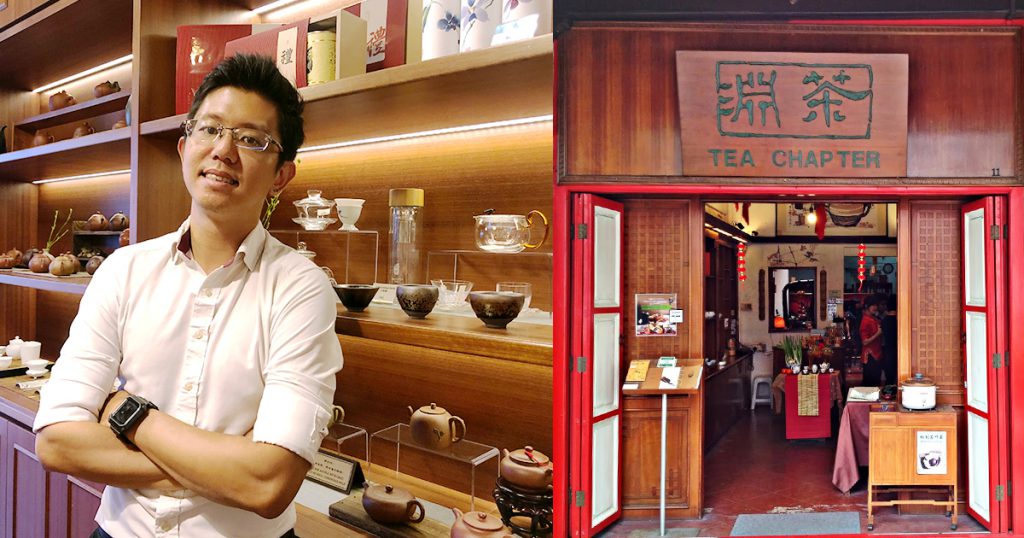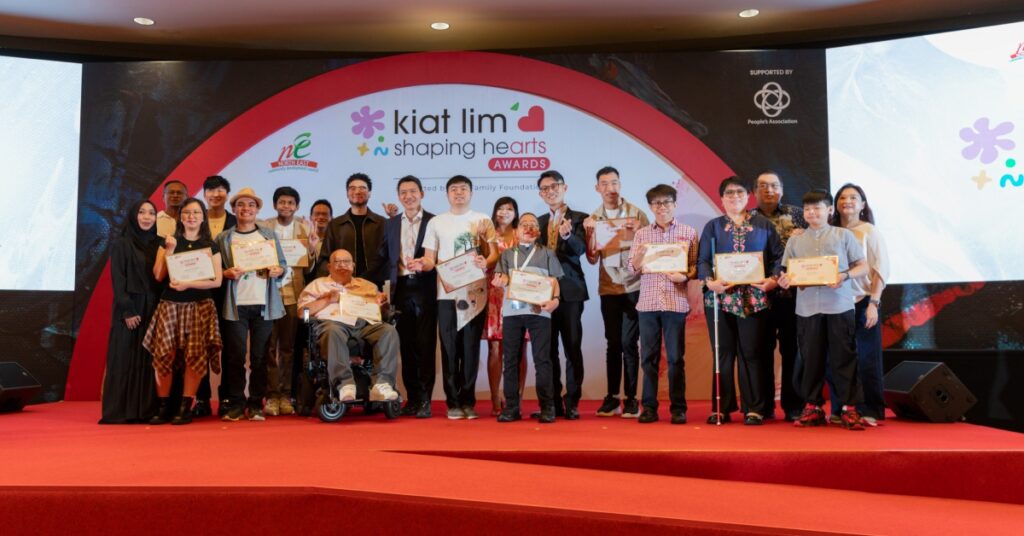Culture fades when younger generations don’t continue to preserve it.
Will it be the fault of millennials when things like traditional arts, music and craftsmanship become relics of the past? Possibly.
But among us, some Singaporeans can be lauded for their passion to carry on the torch. Fund Lee, for one, wants to make sure the age-old art of Chinese tea isn’t forgotten.
At 33 years-old, he’s running one of the most established traditional tea houses in Singapore with a history dating back to 1989.
A Cup Full Of Heritage
The origins of Tea Chapter came about with Fund’s father, and a group of 16 other friends who bonded through their love of Chinese culture while they were studying at Singapore Institute of Management (SIM).
With an investment of $5,000 each, they became the 17 co-owners of their own tea house, nestled along a historical stretch of pre-war shophouses.

At the time, the Urban Redevelopment Authority (URA) was undertaking a project to conserve buildings in the Tanjong Pagar area.
When the founders bought 9 Neil Road, the very first unit to go through restoration, it essentially sealed Tea Chapter as a landmark in Singapore’s history.
This drew dignitaries from around the world to visit for a sip of tea, including Queen Elizabeth, and First Lady of South Korea Kim Jung Sook.
Over the years, the tea house was able to expand into the next-door shophouse unit as well.

Wait Till The Brew Is Ready
Tea Chapter was always a part of Fund’s life growing up, he shares. It was home to his childhood antics when he “used to ‘steal’ tea eggs to barter with the neighbouring Chinese eatery for food”.
When he was a teenager, his parents would get him to serve customers during school holidays. But back then, he admits he was “quite spoiled” and preferred to avoid these duties if he could.
Fund’s parents also hoped he would grow up to be successful through a career in finance or banking, which was part of the reason for his unusual name.
Instead, he was more interested in entrepreneurship, and it already showed when he started selling trading cards at the age of 8.
He was just a kid in Primary Two, but he would make his own catalogues of Yu-Gi-Oh!, Pokémon and Magic: The Gathering cards to generate sales from his schoolmates.
“Then I started selling CDs, Red Bull, and anything that I could get my hands on. I just really wanted to sell stuff,” he says.

It was only when he was 25, and looking for a job fresh out of university, that Fund started seeing how important Tea Chapter was to him.
He frequently told his parents he felt it was “such a waste” that the business had dwindled from its former glory as people became less involved in culture and traditions.
After hearing this a few times, they suggested he could join and help steer the business forward.
Fund saw this as a chance to have a try at entrepreneurship from a “safer” starting point, so he readily took up his parents’ invitation.
To Preserve, Not Modernise

As we talk about his journey, Fund expertly prepares a brew of Imperial Golden Cassia—one of their oolong teas—and walks me through a typical tea ceremony.
“For the first brew, we don’t drink it, we pour it out straightaway. The hot water ‘wakes’ the tea leaves. They’ll begin to unroll, bringing the flavour out,” he says.
Once that is done, he begins making the next brew to drink, explaining how to enjoy its aroma and taste.
The first sip is to cleanse your palette. The second sip is taken like wine, tasting it with a bit of swirling in your mouth. The third sip is taken like beer, to enjoy its aftertaste.

To anyone on the outside, Fund seems to know tea culture like the back of his hand, but picking up the knowledge and skills wasn’t easy for him just because he had predecessors to model after.
In fact, working with a large group of 17 shareholders who hold tightly to traditional beliefs posed its own difficulties.
Rather than receiving direct mentorship from them, Fund could only observe from the sidelines when they conducted courses for customers.

Despite this, obtaining the knowledge of tea wasn’t his toughest challenge.
“What I learned the most, and I’m still learning, is how to communicate with people and manage a legacy brand,” he tells us.
In its early days, the business allocated “zero marketing budget” as it already had a strong name through word-of-mouth.
However, he saw that this wouldn’t continue to work for current and future generations, and that the brand now needs to focus much more on outreach.
While almost every other second generation owner is modernising old businesses with digital upgrades, Fund needs to reach a particularly delicate balance as the mission remains “to preserve”, rather than grow Tea Chapter.

Some developments he has worked on include revamping their ecommerce channel, updating payment systems, doing digital marketing, and collaborating more with other people.
On one hand, he would draw the line at letting customers order their tea on a tablet. But on the other, he’s keen to explore how virtual reality (VR) goggles could let people enjoy their tea with idyllic mountain or ocean views; something we can’t experience in Singapore.
When it comes to decisions around technology, he says it should only be used if it heightens the experience, and not if it simplifies processes and takes away the human touch.

Writing The Next Chapter
In their 30 years of serving tea, Tea Chapter has been more than just an authentic tea house for drinking.
They sell tea and tea wares in their retail store and online, provide tea appreciation packages and even run extended workshops for individuals and corporate groups who want to master the art in-depth.

Of these areas, Fund shares that their most successful initiative is their school outreach programme.
They regularly bid for school projects, which helps Tea Chapter secure 20 to 30 workshops monthly, teaching around 100 students a time at each session.
“When secondary schools run their Bicultural Weeks, tea is a relatively popular choice,” he says.
Far from resting on his laurels, Fund is navigating new ways to take the business’ legacy into its next chapter.
For example, he’s currently tapping on grants from agencies like Singapore Tourism Board to refresh Tea Chapter’s image as the brand celebrates its 30th anniversary.
Through this rebranding project, he hopes to make Tea Chapter more appealing to younger crowds of customers.

He also hopes people will start seeing their tea as ‘omiyage’ (a Japanese concept of edible souvenirs); something they want to buy for their friends and family back home when they travel.
For a heritage business like this, using platforms like Airbnb Experiences is also an option to connect to digital audiences who are looking out for cultural activities to try.
Expansion is not on the cards right now, especially within Singapore, where Tea Chapter was set up with a uniquely historical position that would be hard to replicate through new outlets.
Instead, Fund says it would be worth considering if opportunities arise to let them open tea houses overseas.
However, plans like those look to be some time away. Right now, his focus lies on reigniting the dormant culture of Chinese tea here in Singapore.
- To find out more about Tea Chapter or book a tea appreciation session, visit their website here, or follow them on Facebook and Instagram.
Featured Image Credit: Vulcan Post










